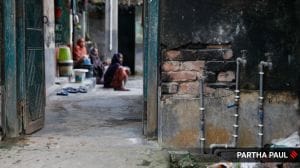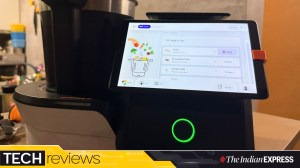Who should screen check-in baggage? Security bureau says CISF, Ministry says airport staff
The emergency landing of a Kingfisher flight yesterday at Hyderabad’s new airport, caused because of a smoke alert...

The emergency landing of a Kingfisher flight yesterday at Hyderabad’s new airport, caused because of a smoke alert soon after take-off, has brought under scrutiny the “inline baggage check system” installed at the greenfield airport for the first time in the country. It has also revived the debate about who should man the baggage screening at airports.
Investigations found that a cargo consignment on the flight — IT 801 — which had 90 passengers on board, contained a powder-like substance which was cleared by the airport’s private security screening staff although it should not have been allowed on the passenger flight. Though declared a powder, it turned out to be an effervescent citrus concentrate, which caused the smoke alert on the aircraft.
The “inline baggage check” has a four-level screening system, which includes X-ray scanning and manual checks. As per this system, a passenger can walk right to the check-in counter with his baggage, which is then sent for checking. The passenger is only called in case a hazardous object is found in his baggage.
It has been argued for some time now that baggage checking should be handled by a centralised agency and not individual airlines. On March 7 this year, the Bureau of Civil Aviation Security (BCAS) had written to the Ministry of Civil Aviation saying that since security and Air Traffic Control remain the functions of the government, the Central Industrial Security Force (CISF) should be given the job of screening the baggage.
But the Ministry had rejected the idea, saying that the CISF was tasked with “anti-hijacking” duties while baggage checking is an “anti-sabotage” measure. It added that baggage checking is a function of “ground handling” staff, not of security. In its reply dated March 20, the ministry also pointed out that BCAS had not raised the issue when the new ground handling policy, which also looks at the baggage screening system, was cleared last year. As per the policy, baggage checking can be done by private developers through joint ventures with ground handling agencies.
That’s how it is being done at the new Hyderabad airport, where GMR Hyderabad International Airport Ltd (GHIAL), the developers and operators, conduct the baggage screening.
While the ministry was earlier of the view that CISF could be given a “supervisory role” in screening the baggage, the CISF is reported to have conveyed that it would either take complete charge or stay out of the process altogether.
Meanwhile, the airlines have argued that a centralised system should be introduced only after an inline baggage check system was installed. Now, the inline baggage check system has been introduced in both the new greenfield airports at Hyderabad and Bangalore. While Hyderabad airport was opened to flights last month, the new Bangalore airport is set to open in May.
Hyderabad’s new system
•Level 1: High-speed automatic explosive-detection X-ray machines. No operator intervention; 60- 70% bags cleared here.
•Level 2: Bags not cleared at Level 1 sent to manual operator who scans for weapons, guns, knives, explosives, components of improvised explosive devices, hidden contraband.
•Level 3: If not cleared within 20 seconds at Level 2, bag is checked at Level 3 with a high-resolution image datafile of the threat object. The latest explosive detectors and sniffer dogs are pressed into service.
•Level 4: The owner of the bag is called for questioning.



- 01
- 02
- 03
- 04
- 05




























